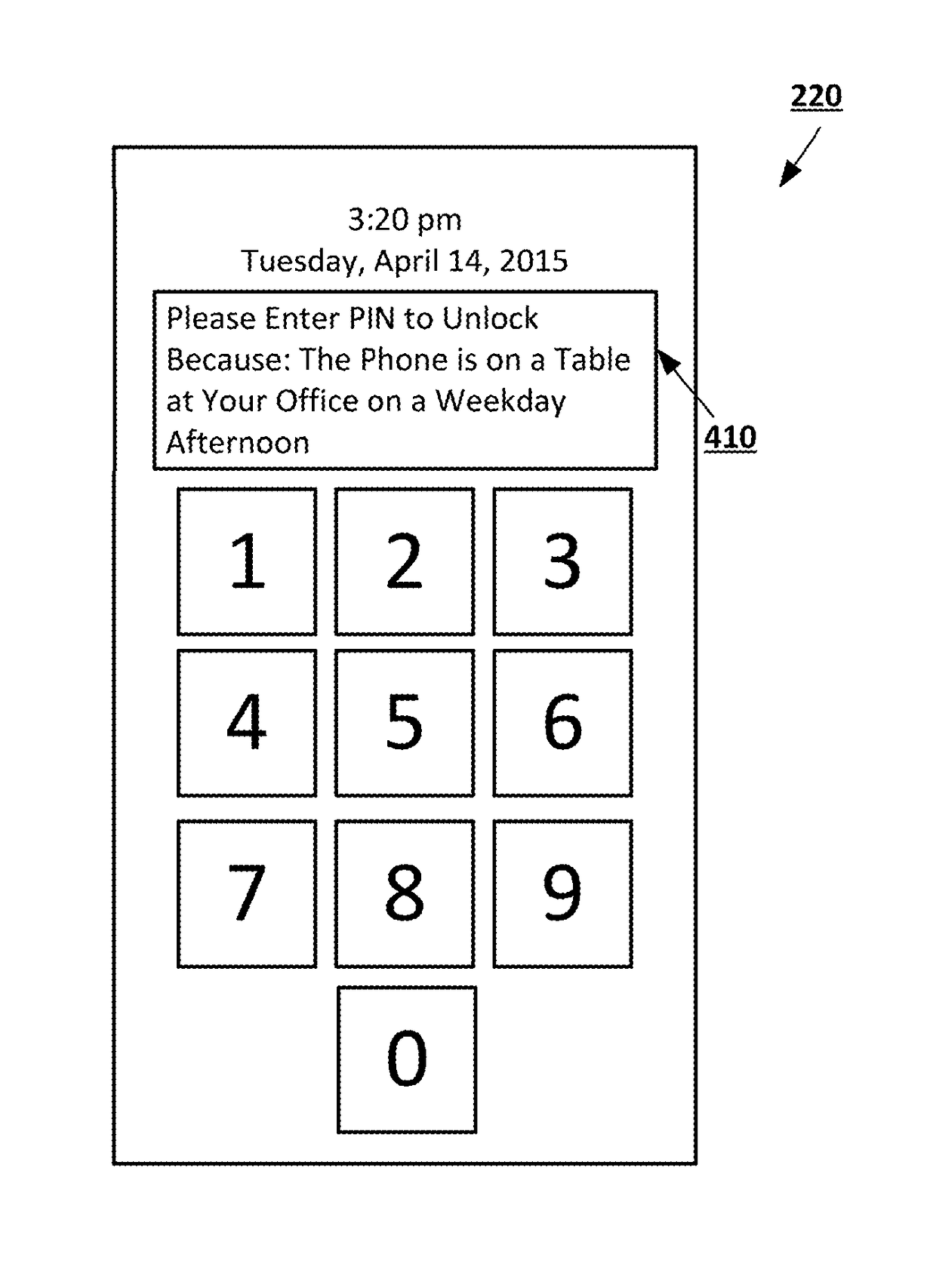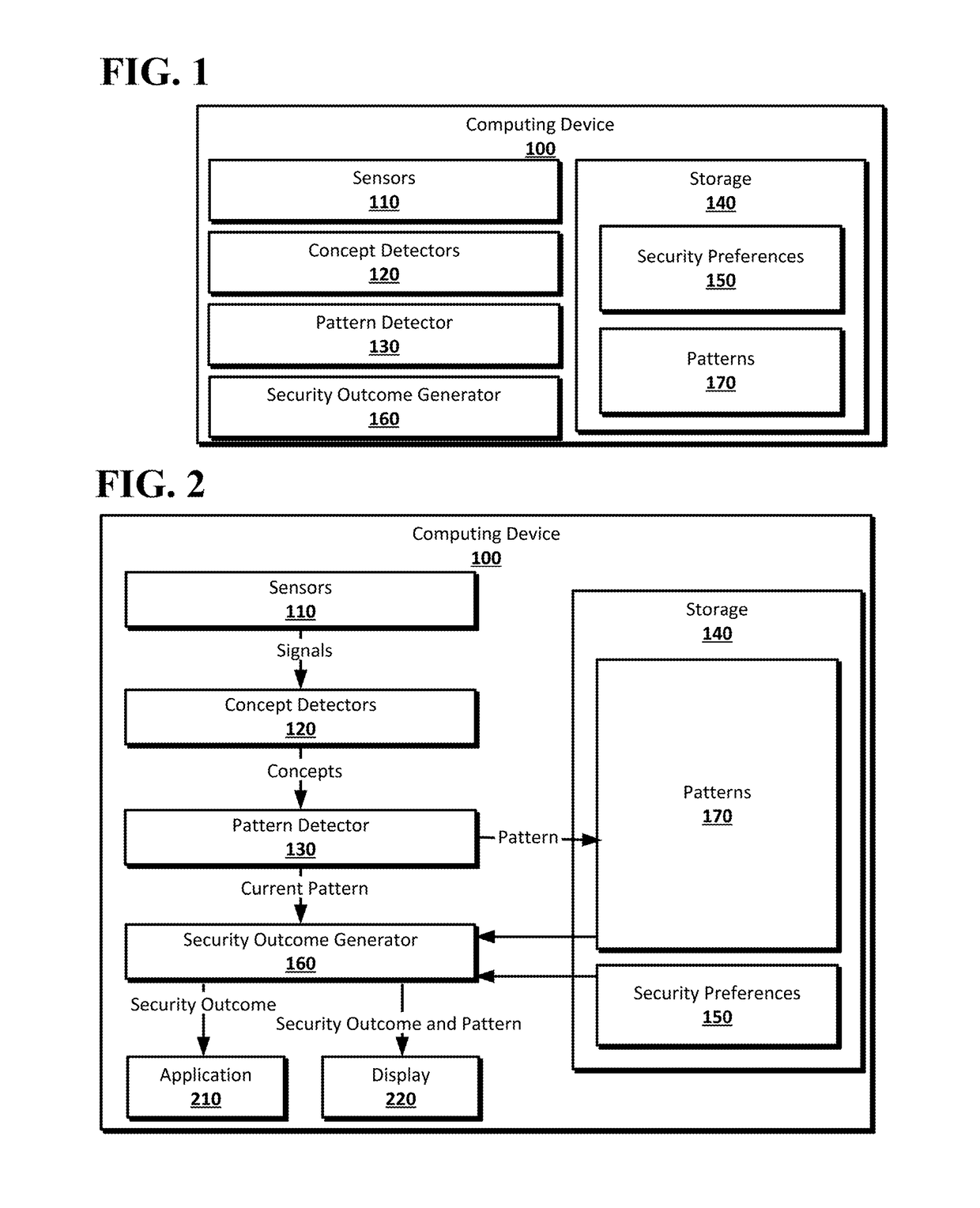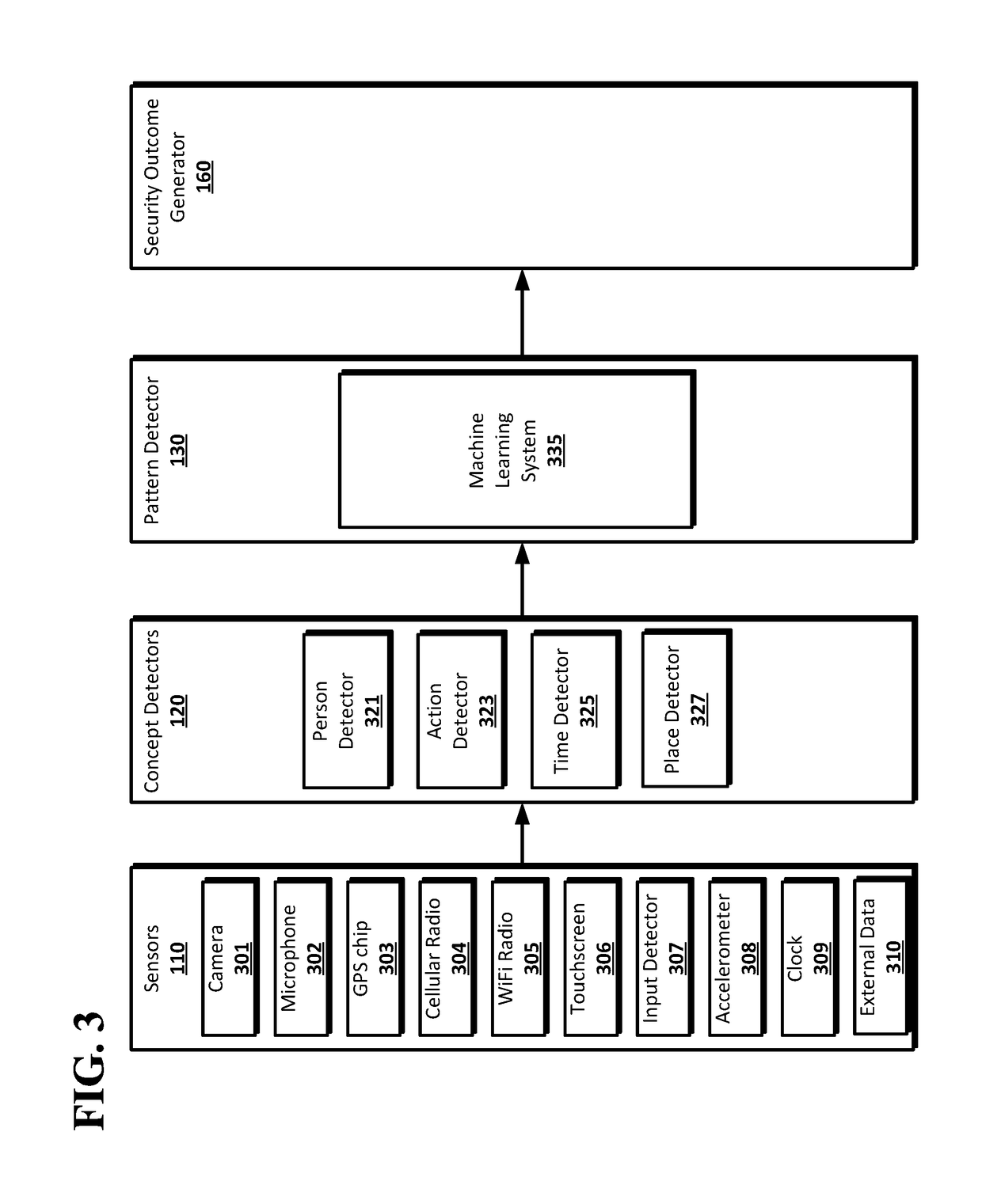Dynamic authorization
a technology of dynamic authorization and authorization, applied in the field of dynamic authorization, can solve the problems of frequent interruption of user's use of mobile computing devices, inability to adjust the decisions made by smartphones, and less security of mobile computing devices
- Summary
- Abstract
- Description
- Claims
- Application Information
AI Technical Summary
Benefits of technology
Problems solved by technology
Method used
Image
Examples
Embodiment Construction
[0019]Dynamic authorization may be used on a computing device to allow for presentation of authentication prompts to a user based on the user's usage patterns while presenting explanations to the user of why authentications prompts are presented or not presented, and allowing the user to adjust the situations which result in the presentation of an authentication prompt. Signals from various sensors on a computing device may be analyzed to determine concepts associated with the current state of the computing device, such as who is using the computing device, where the computing device is located, what actions are being performed with the computing device, and the current temporal context for the computing device. For example, the signals may be used to determine that a smartphone is being used by its owner in the owner's car on a Sunday while the owner is driving to the grocery store. The concepts may be used to determine patterns of usage by the user. The patterns may be used to mak...
PUM
 Login to View More
Login to View More Abstract
Description
Claims
Application Information
 Login to View More
Login to View More - R&D
- Intellectual Property
- Life Sciences
- Materials
- Tech Scout
- Unparalleled Data Quality
- Higher Quality Content
- 60% Fewer Hallucinations
Browse by: Latest US Patents, China's latest patents, Technical Efficacy Thesaurus, Application Domain, Technology Topic, Popular Technical Reports.
© 2025 PatSnap. All rights reserved.Legal|Privacy policy|Modern Slavery Act Transparency Statement|Sitemap|About US| Contact US: help@patsnap.com



